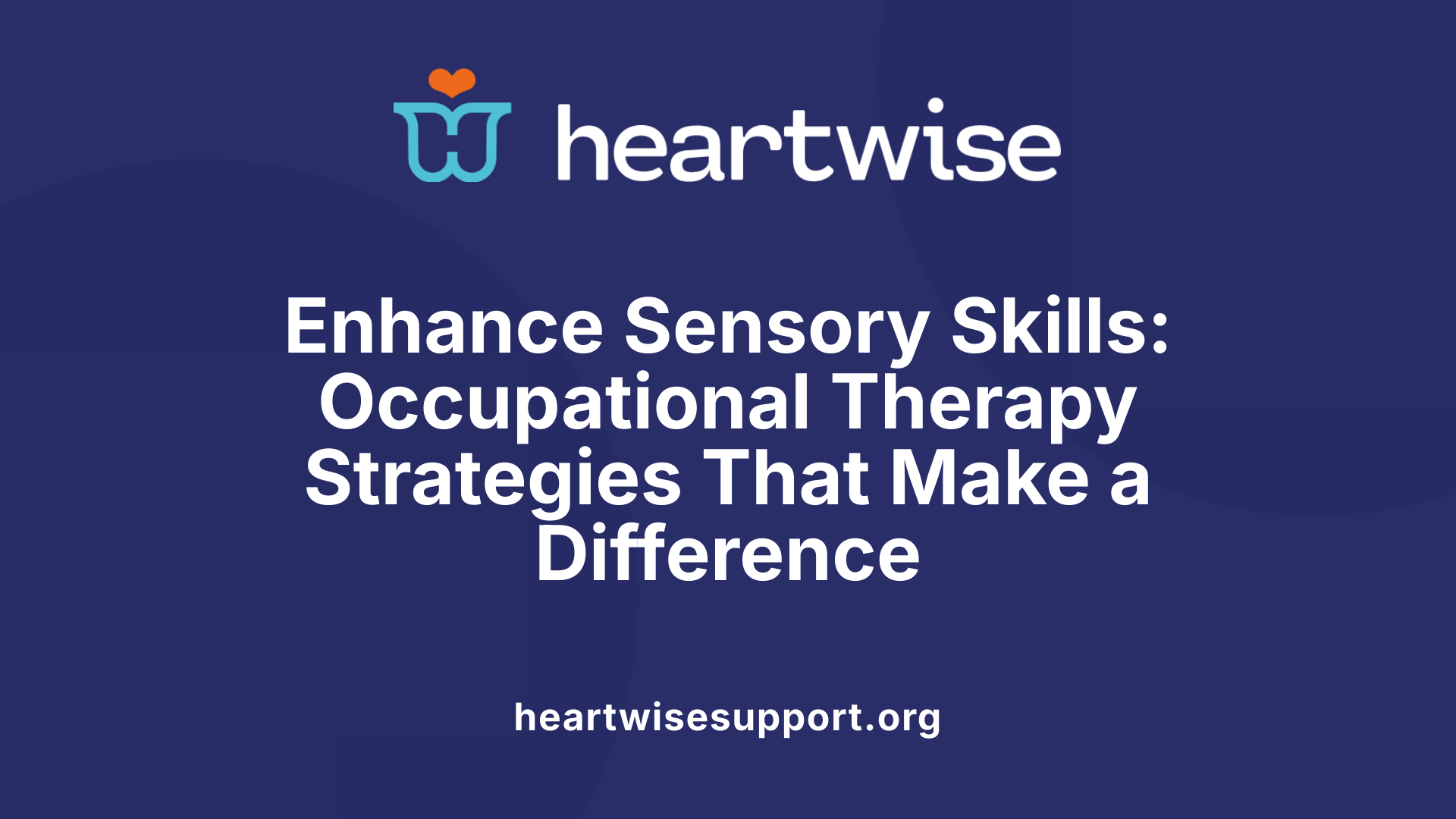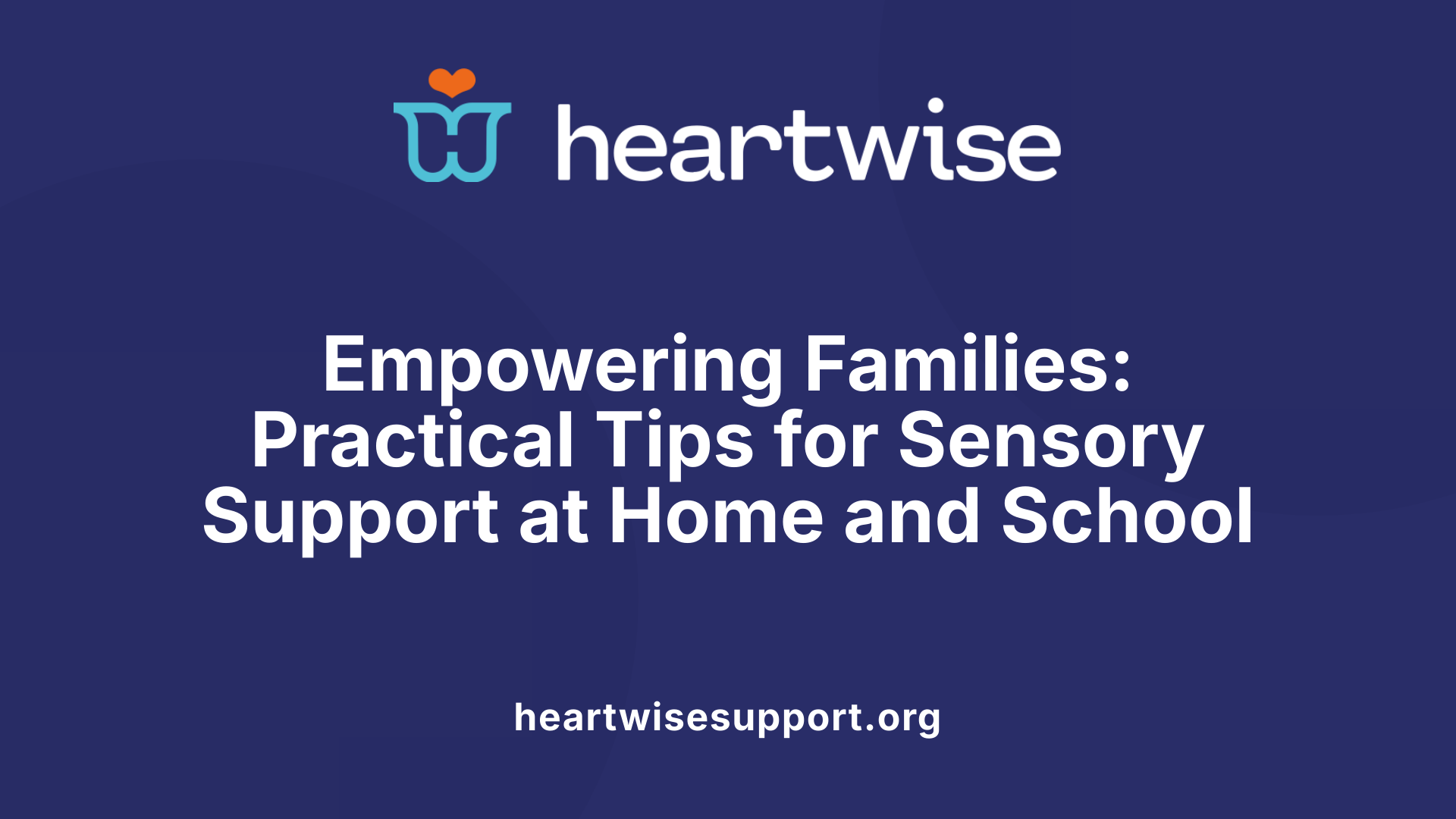Understanding the Importance of Sensory Processing Skills
Sensory processing is a vital function that allows individuals to interpret and respond appropriately to sensory stimuli in their environment. For children, effective sensory processing underpins development in motor skills, emotional regulation, social participation, and learning. When sensory input is misinterpreted or poorly regulated, children may experience sensory processing disorder (SPD), which can significantly impact daily functioning and quality of life. Occupational therapy plays a crucial role in diagnosing, assessing, and addressing sensory issues through tailored interventions rooted in sensory integration principles. This article explores how occupational therapy enhances sensory processing skills, the strategies involved, and the profound benefits for children and their families.
Understanding Sensory Processing Disorder and Its Management

What is sensory processing disorder and how is it treated by occupational therapy?
Sensory Processing Disorder (SPD) is a condition where the brain struggles to correctly interpret and respond to sensory information from the environment. This can involve sights, sounds, touches, tastes, movement, and smells. Children with SPD may show signs such as clumsiness, aversion to certain textures, sensitivity to bright lights or loud noises, and difficulty with motor skills. Although not officially classified as a medical diagnosis, SPD can significantly impact daily life.
Occupational therapy (OT) plays a vital role in diagnosing and managing SPD. OTs conduct comprehensive sensory assessments—using observations, interviews, and standardized tests—to understand each child's unique sensory profile. Based on these evaluations, they create personalized treatment plans that often include sensory integration therapy.
Sensory integration therapy involves fun, play-based activities designed to help children respond more appropriately to sensory stimuli. These activities might include swinging, brushing routines like the Wilbarger protocol, ball pit play, and weighted vests, all aimed at regulating sensory input. Additionally, therapists teach caregivers how to implement sensory diets—customized daily routines filled with sensory activities like bouncing, swinging, and water play—to help manage sensitivities at home.
Involving caregivers in therapy ensures that strategies are consistently applied outside of sessions, promoting better self-regulation, improved social interactions, and increased independence. While there is currently no cure for SPD, the goal of occupational therapy is to reduce symptoms and improve overall functioning, enhancing the child's ability to engage fully with everyday activities.
Techniques Used by Occupational Therapists to Improve Sensory Processing
What strategies do occupational therapists use to enhance sensory processing skills?
Occupational therapists employ a variety of sensory activities and tools to improve how children process sensory information. One primary approach is sensory integration therapy, which involves fun, movement-based activities like swinging, spinning, and balancing exercises. These activities are designed to help children respond more appropriately to sensory stimuli and develop better regulation.
Therapists also create individualized sensory diets — structured plans that include daily sensory activities like finger painting, sandbox exploration, gardening, and playground exercises. These activities aim to help children manage their arousal levels and develop sensory tolerance. Deep pressure techniques such as joint compressions and the Wilbarger brushing protocol are commonly used to provide calming tactile input. Heavy work activities, involving pushing or pulling objects, support children seeking proprioceptive input.
In addition to activities, sensory tools like fidget toys, wobble cushions, weighted blankets, and sensory bins are used to promote focus and calmness. Environmental modifications in home and school settings, such as adjusting lighting, minimizing noise, and creating quiet zones, support better sensory processing.
Parents are often trained to carry out these activities at home, creating a consistent sensory-regulating environment across different settings. Overall, these strategies help children with sensory challenges develop functional responses, improve emotional regulation, and enhance participation in daily routines.
Sensory Integration Therapy: Playful Approaches to Sensory Regulation

What is sensory integration therapy and how is it used in occupational therapy?
Sensory integration therapy (SIT) is a playful, hands-on approach used by occupational therapists to help children better process and respond to sensory information from their environment. Originally developed in the 1970s by A. Jean Ayres, it focuses on activities that stimulate different sensory systems to improve overall sensory functioning.
The therapy incorporates various fun activities and equipment—such as swings, trampolines, weighted vests, brushing techniques, and obstacle courses. These tools target key sensory systems: vestibular (balance and movement), proprioceptive (body awareness), tactile (touch), and auditory (hearing). By engaging children in play, therapists aim to help them organize sensory input more effectively, which can lead to improvements in motor skills, attention, and social behaviors.
During sessions, therapists carefully evaluate each child's sensory profile and tailor activities accordingly. The ultimate goal is to help children regulate their sensory responses, reduce anxiety, and function better in daily life. Though evidence supporting SIT is partly anecdotal, it remains a popular therapy for children with sensory processing challenges, including those with autism spectrum disorder (ASD) and ADHD.
Common activities and equipment used
Occupational therapists employ a variety of playful and tactile activities in sensory integration therapy:
| Equipment/Activity | Purpose | Sensory Systems Targeted |
|---|---|---|
| Swings | To promote vestibular input and balance | Vestibular |
| Ball pits | To encourage tactile exploration and calming | Tactile |
| Weighted vests and blankets | To provide deep pressure and calming input | Proprioceptive |
| Brushing protocols | To deliver gentle tactile stimulation | Tactile |
| Spinning and rocking | To stimulate vestibular senses and balance | Vestibular |
| Obstacle courses | To improve coordination and proprioception | Proprioceptive |
| Water play and tactile toys | To explore textures and provide calming sensory input | Tactile |
Key sensory systems involved
Sensory integration therapy targets several core sensory systems:
- Vestibular system: Responsible for balance and movement, addressed through swinging, spinning, and rocking.
- Proprioceptive system: Involves awareness of body position, triggered by activities like joint compressions, climbing, and deep pressure.
- Tactile system: Concerned with touch, stimulated by tactile play, brushing, and textured objects.
By systematically engaging these systems through enjoyable activities, therapy aims to help children develop better sensory responses, aiding their overall participation in daily routines, social interactions, and learning environments.
Activities and Tools in Sensory Integration Therapy
Occupational therapy for sensory issues frequently includes a range of engaging, playful activities designed to help children process sensory input more effectively. These activities often involve tactile exploration, such as playing with different textured materials in sensory bins, and motor activities like swinging, bouncing, or balancing on therapy balls. Movement-based exercises, including obstacle courses and joint compressions, are used to stimulate proprioceptive and vestibular systems.
In addition to activities, a variety of sensory tools and equipment are incorporated to support regulation and focus. Weighted vests or blankets provide calming deep pressure, while chewable jewelry addresses oral sensory needs. Visual and auditory stimulators, such as liquid timers, flashing lights, and textured toys, help promote attention and reduce anxiety.
Therapists also create individualized sensory diets—a tailored set of sensory activities that children can perform throughout the day to maintain regulation. These may include calming strategies like water play, body awareness exercises, and heavy work activities that help children feel more grounded.
Many therapy sessions utilize specialized equipment, such as sensory room furniture, fidget sets, and visual charts, to establish a calming environment. These tools are selected based on each child's specific sensory processing profile, developmental stage, and preferences.
Overall, the activities and tools used in sensory integration therapy are highly individualized, aiming to improve sensory modulation, foster better integration, and support overall functioning in daily life. By combining play, targeted exercises, and appropriate sensory inputs, occupational therapists help children develop vital skills to navigate their sensory world more comfortably.
Improving Children's Sensory Skills Through Occupational Therapy

How does occupational therapy improve sensory processing skills in children?
Occupational therapy enhances sensory processing abilities in children by engaging them in playful, meaningful activities that stimulate various senses. Therapists often incorporate fun sensory experiences like swinging, water play, obstacle courses, and tactile activities such as brushing the skin or using ball pits. These activities help children interpret and organize sensory input, making responses more appropriate and manageable.
Specialized equipment such as swings, weighted vests, and sensory bins are used to target specific sensory systems, promoting a balanced state of alertness and calmness. The therapy also involves techniques like sensory diets—personalized schedules of activities tailored to meet each child's sensory needs throughout the day—and protocols such as the Wilbarger brushing method, which involves using a soft brush and joint compressions to provide deep pressure stimulation.
Parents play an important role by learning how to implement these strategies at home. They are guided on creating routines that incorporate sensory activities, which helps in reinforcing sensory regulation and reducing challenging behaviors like meltdowns or hyperactivity.
Overall, occupational therapy aims to help children respond more adaptively to sensory stimuli, resulting in improvements in focus, social interaction, emotional regulation, and daily independence. Children may also experience less anxiety and greater confidence in their environments, making everyday activities more accessible and enjoyable.
Assessment Procedures for Sensory Processing Challenges
How do occupational therapists assess sensory processing challenges?
Occupational therapists use a combination of standardized assessments, observations, and detailed case histories to evaluate sensory processing difficulties in children. These assessments help identify specific sensory patterns and reactions that may affect daily functioning.
Standardized tools are commonly utilized to gain a comprehensive understanding of a child's sensory profile. For instance, the Sensory Profile™ 2 is widely used; it evaluates sensory processing patterns across different contexts like home and school. Another effective instrument is the Sensory Processing Measure-2 (SPM-2), which assesses sensory responses from infancy through adulthood, capturing how sensory issues manifest at various developmental stages.
In addition, more specialized tests such as the Sensory Integration and Praxis Tests (SIPT) and the Evaluation in Ayres Sensory Integration (EASI) are employed for in-depth analysis. These require advanced training and are targeted at understanding sensory integration and praxis skills more precisely.
Observational assessments also play a crucial role. The SOSI-M, for example, allows therapists to observe real-time sensory responses during structured activities, providing insight into how a child reacts to specific stimuli.
A comprehensive evaluation involves gathering a detailed developmental history, including behavioral responses to sensory input, motor skills, and communication abilities. Combining all this information, occupational therapists develop tailored intervention plans aimed at improving sensory modulation, adaptive responses, and overall participation.
Ultimately, these assessment procedures inform targeted therapies such as sensory integration activities, environmental changes, and parent/caregiver guidance to support sensory processing improvements.
Evidence Supporting Occupational Therapy for Sensory Processing Issues

Are there evidence supporting the effectiveness of occupational therapy for sensory processing disorders?
Research indicates that occupational therapy, especially approaches like sensory integration therapy (SIT), can have positive effects on children with sensory processing challenges. Studies have shown improvements in sensory regulation, motor skills, social interactions, and emotional regulation. Many children experience enhanced focus and reduced sensory-related anxiety after therapy, facilitating better participation in daily activities.
Evidence from clinical trials and observational studies suggests that children receiving tailored occupational therapy often demonstrate progress in adaptive behaviors, participation at school and home, and overall functional abilities. For example, some research highlights improvements in sleep patterns, behavior, and sensory responses, which can translate into higher confidence and social engagement.
However, it is important to note that the scientific evidence base has limitations. Not all studies are of high quality, and many have small sample sizes or lack control groups. Consequently, while positive trends are evident, the strength of evidence varies, and results may depend on the specific intervention used, the child's age, and the presence of co-occurring conditions.
In addition, some sensory-based interventions such as weighted vests or certain sensory diets lack robust proof of benefit and are not universally recommended. Instead, evidence supports the use of comprehensive, individualized plans that incorporate play-based activities and multisensory environments.
Practitioners are advised to interpret research findings with caution. They should combine evidence with clinical judgment, family priorities, and the child's unique needs when planning therapy. Ongoing research continues to refine best practices and evaluate the long-term efficacy of different occupational therapy strategies for sensory processing issues.
Supporting Children and Families at Home and School

What are some ways to help children with sensory processing difficulties at home?
Supporting children with sensory challenges at home involves creating a safe, calming environment that encourages sensory regulation. One effective strategy is designing a dedicated sensory space—sometimes called a sensory corner—where children can relax and self-regulate. This space can include calming items like weighted blankets, fidget toys, soft lighting, and soothing visuals tailored to the child's preferences.
Incorporating sensory activities into daily routines can also make a difference. For example, sensory bins filled with rice, water beads, or textured objects provide tactile stimulation. Sensory bottles, which contain swirling liquids and glitter, are good calming tools that children can shake and observe.
Movement-based activities are especially helpful to regulate sensory input. Parents can encourage swinging, bouncing on an exercise ball, or navigating obstacle courses designed to engage the vestibular and proprioceptive senses. These activities help children feel more grounded and can reduce hyperactivity or anxiety.
Calming strategies such as deep pressure massage, gentle brushing (using protocols like the Wilbarger method), deep breathing exercises, or listening to soothing sounds can help children manage sensory overload. Modeling calm and patient behavior during stressful moments reinforces self-regulation skills.
Environmental modifications are crucial. Offering sensory tools like textured mats, visual supports such as schedules or visual timers, and providing options rather than forcing activities respect the child’s sensory preferences. The goal is to create an accommodating space that supports their unique sensory profile.
Importantly, all activities should be respectful of the child's responses to stimuli, avoiding forceful or distressing approaches. With consistent application of these strategies, children can improve their ability to process sensory information, leading to better emotional regulation, independence, and comfort in daily routines.
How can parents and caregivers be educated to support sensory regulation?
Educating parents and caregivers is vital for effective at-home support. They learn to recognize signs of sensory stress — such as meltdowns, avoidance, or over-stimulation — and understand the importance of individualized sensory diets.
Training often includes instruction on sensory activities that can be incorporated at home, like using weighted blankets for calming, or engaging in movement breaks. Caregivers also learn to observe the child’s responses to various stimuli and adjust activities accordingly.
Practical knowledge about sensory protocols, such as the Wilbarger brushing technique, enables parents to participate actively in therapy. This technique involves gentle brushing with a soft brush and joint compressions to provide deep pressure input, which can calm the nervous system.
Furthermore, caregivers are guided on structuring daily routines, creating visual schedules, and setting up sensory-friendly environments. They are also encouraged to incorporate outdoor activities and sensory-rich play into routines, enhancing the child's sensory experiences.
Ongoing education through therapy sessions and resources helps caregivers stay informed and confident. Collaboration with occupational therapists ensures that the sensory strategies used at home align with the child's therapy goals, fostering consistent support.
Through understanding and active participation, parents and caregivers become essential partners in helping children develop sensory regulation, leading to improved behavior, emotional health, and daily functioning.
Harnessing the Power of Occupational Therapy for Sensory Success
Occupational therapy offers a comprehensive, individualized approach to enhancing sensory processing skills in children. Through specialized assessments, playful sensory integration techniques, and home-school collaboration, therapists help children develop better regulation, improve motor and social skills, and increase independence. While ongoing research continues to refine these therapies, the proven strategies, equipped with engaging activities and caregiver involvement, make a significant difference in children’s lives. Investing in targeted occupational therapy can foster lifelong benefits, empowering children to navigate their sensory worlds with confidence and ease.
References
- Treating Sensory Processing Issues - Child Mind Institute
- How Can Occupational Therapy Help with Sensory Issues?
- How Occupational Therapy Supports Children with Sensory ...
- [PDF] Sensory toolkit
- A Survey of Occupational Therapists on a New Tool for Sensory ...
- Sensory Processing - Kid Sense Child Development
- Occupational Therapy Interventions for Children and Youth With ...











